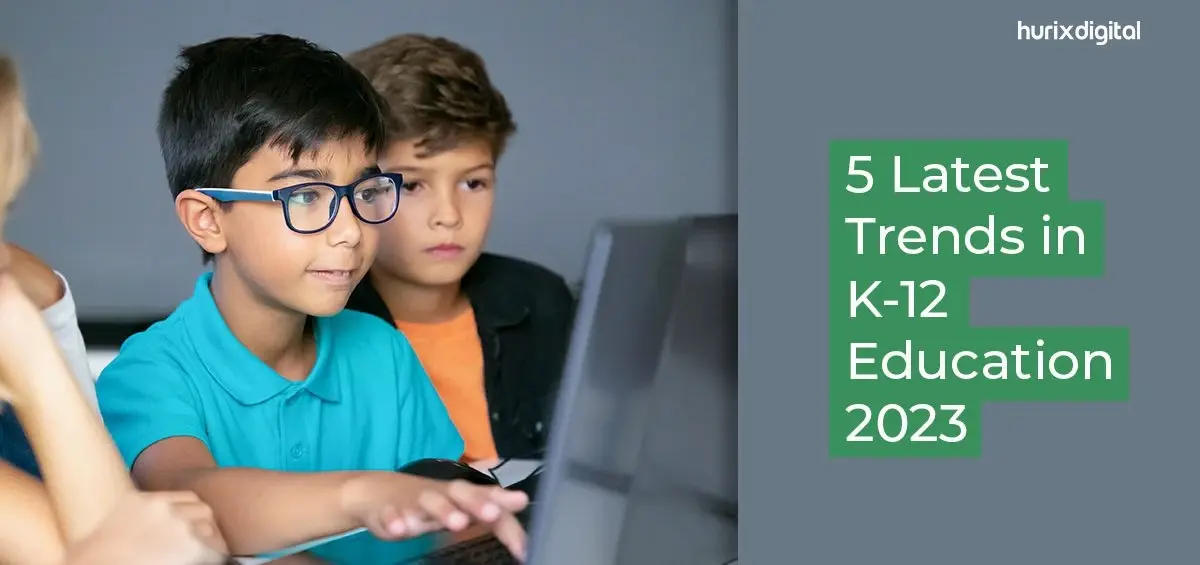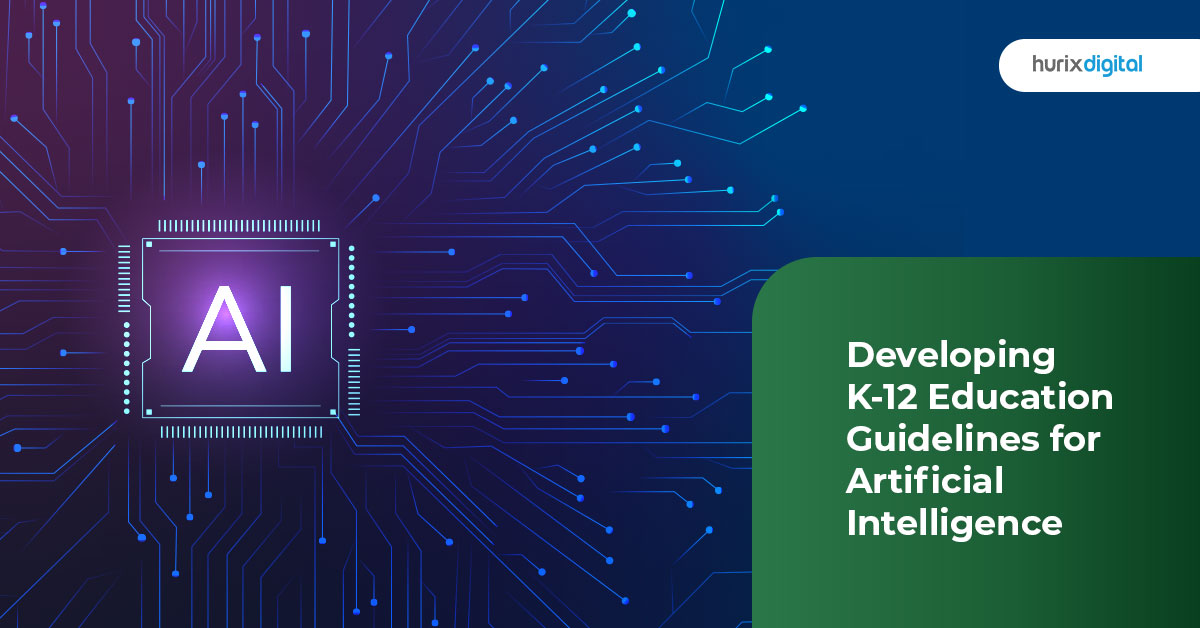
Top 21 K-12 Education Statistics of 2023
Summary
Table of Contents:
- Introduction
- Top 21 K-12 Education Statistics to Shape the K-12 Education Market in 2023
- Choose Hurix for K-12 EdTech Needs
Introduction
As the EdTech industry is experiencing tremendous change because of the COVID-19 pandemic and fears of a recession in 2023, these latest K-12 education statistics will highlight what’s on the cards.
K-12 education statistics have had a paradigm shift over the last decade. Student-centered learning that offers autonomy to learners will be most popular in 2023
Top 21 K-12 education statistics that are expected to shape the K-12 education market in 2023
1. There will be 5.3 billion people with access to the internet in 2023
K-12 education is going online in 2023. This is mainly because of better access to the internet globally. It’s estimated that over 5.8 billion people will have access to the internet, of which 1 billion will get 5G connectivity. This will make e-learning popular for K-12 in 2023.
2. The global K-12 e-learning market is expected to grow by $12930 million by 2028
The pandemic has contributed to the rapid growth of K-12 online education. Between 2023 and 2028, the K-12 online learning industry is expected to have a CAGR of 8.3% and grow to $12930 million by the end of 2028.
3. The online K-12 tutoring market is expected to grow to $60.03 billion by 2023
According to a study by Technavio, the tutoring market within the larger K-12 online education universe is expected to have a 12% CAGR in 2023. The industry will be valued at $60.03 billion.
4. The global self-paced learning market will see a CAGR of 8.2%
More K-12 students are opting for self-paced programs, and this trend will continue into 2023.
High-quality and affordable content made available by reputed ed-tech companies is driving this trend forward.
5. Adoption of VR and AR in the online education market is expected to see an 18.2% CAGR between 2022 and 2027
Research shows that more K-12 programs are adopting VR and AR content to make learning more impactful and engaging.
In particular, AR and VR usage in K-12 will be observed in STEAM, art, social sciences, biology/medicine, and technical education.
6. Investment in AI technology for online learning is expected to reach $3.68 billion in 2023
A report by Markets and Markets shows that artificial intelligence, deep learning, machine learning, and natural language processing are going to play an important role in the way content distribution systems work.
AI is expected to increase e-learning relevance to learners while also facilitating more accurate performance grading and the development of learner-friendly pedagogical models.
7. Europe will see a CAGR of 15% in the field of e-learning in 2023
According to Technavio, the European K-12 education market will grow quickly in 2023, with more European nations embracing e-learning.
Europe is expected to move in favor of personalized learning while foregoing dependence on traditional classroom learning.
8. The Middle East is expected to increase investments in online education in 2023
The Middle East Online Education & E-Learning Market Size: Demand, Opportunity & Growth Outlook 2023 report shows that the Saudi Arabian online education market will be valued at $237.1 million by 2023. This is followed by the UAE, with its expected CAGR of 10.5%.
9. STEAM jobs will see an 8% growth between 2022 and 2029, thanks to increased K-12 STEAM-based programs
Science, Technology, Engineering, Arts, and Math (STEAM) courses are some of the most taken online courses in 2022, thanks to the arrival of AR, VR, and AI in e-learning. This trend is going to continue from 2023 and onwards up to 2029.
10. The Generation Google Scholarship is expected to reduce the gender gap in the field of computer science
The software development industry will also experience a 22% growth during this period. It’s estimated that the Generation Google Scholarship will, in particular, reduce the gender gap in the field.
This scholarship is specifically for women in computer science and will award $1000 to selected students studying technology who have the potential to become leaders in the field.
11. More holistic learning programs will be targeted towards 8–15-year-olds in 2023
K-12 students globally will benefit from holistic learning practices in 2023. The focus will be on developing both soft skills and technical skills.
Additionally, more focus will be on administering DEI programs to help students become global citizens.
12. Student learning retention rate is expected to be just 2%-3% in 2023
K-12 students are expected to have lower retention rates than ever, at just 2%-3% in 2023. This is why gamification of content is becoming more important, as it increases learning engagement by 48%.
13. Digital content is expected to replace paperback and hardcover physical textbooks in 2023
K-12 students will, in greater numbers, start to choose digital content over traditional physical textbooks in 2023.
The global eBooks segment is expected to be worth $16.08 billion, with a CAGR of 3.38% from 2023 to 2027. Audiobooks will see a CAGR of 24% between 2023 and 2028.
14. K-8 public school enrolments in the US are expected to slide down between 2023 and 2030
The COVID-19 pandemic reduced the number of enrolments in public schools in the US. Studies show that K-8 grades will see a 5% decrease, and in high school, a 2% decrease in enrolment nationwide.
15. School expenditure per pupil in the US is set to increase by 14% in 2023
Schools in the US are expected to invest up to $12,700 per child in education and training. Between 2023 and 2024, the US school industry is estimated to spend around $663 billion on student learning.
16. Ransomware attacks are expected to rise against K-12 online academic portals
According to MS-ISAC, 57% of ransomware attacks in the second half of 2022 in the US have been on K-12 level institutions.
It is believed this trend will continue in 2023. Content distribution providers need to ramp up their security to protect learners and proprietary academic curricula.
17. 58% of APAC students are concerned about the quality of e-learning teaching
In the QS International Students Survey 2022, more than half the respondents showed dissatisfaction with the quality of teaching in virtual settings.
It was observed that addressing issues regarding the affordability of digital devices, consistency of internet connectivity, and availability of digital teaching skills could change students’ perceptions.
18. Microlearning is expected to change the way students are prepared for the job market
A study by academia shows that 90% of job-ready individuals prefer micro-learning for career development.
Considering its remote-learning friendliness, self-paced set-up, and short attention needs, microlearning is expected to trickle into K-12 pedagogies as well.
19. 55% of K-12 students prefer to purchase from socially responsible brands
It’s observed that Gen Alpha and Gen Z – who are in the K-12 grades currently – are taking a more active role in deciding the type of providers to seek services from.
Their choice of engaging with socially responsible and eco-friendly brands is expected to affect their decisions regarding education too.
20. Subscription-based e-learning and catalog programs will be in higher demand
Many K-12 education providers with monthly subscription models and catalog programs are seeing an increase in demand. This subscription-based content industry is expected to be valued at around $904.2 billion by 2026.
21. Student-centered learning that offers autonomy to learners will be most popular in 2023
Both offline and online K-12 education programs that enable student-centered learning will be most-popular in 2023.
Additionally, students are showing greater interest in real-time analytics-backed content personalization to get the greatest value from their education.
Choose Hurix for K-12 EdTech Needs
Hurix is a premier content distribution system that is designed to support the K-12 e-learning distribution needs of academic institutions.
Hurix allows you to create multi-type content catalogs that are personalized to different learners’ needs. The platform’s DRM and IPR coverage ensures your curriculum is safe from competitors.
We also use robust data encryption, password management, and identity-based access measures to offer high learner security. The mobile optimization feature allows you to give your students opportunities for seamless remote learning.
Also read, the 5 latest K-12 education trends for 2023
Intrigued by these K-12 Education statistics? Get in touch with us for K-12 solutions.

Senior Vice President – Business Development
Over 25 years of experience in the edtech and workforce learning industry with strong skills in Business Development, Customer Relationship Management (CRM) and Strategy.

























